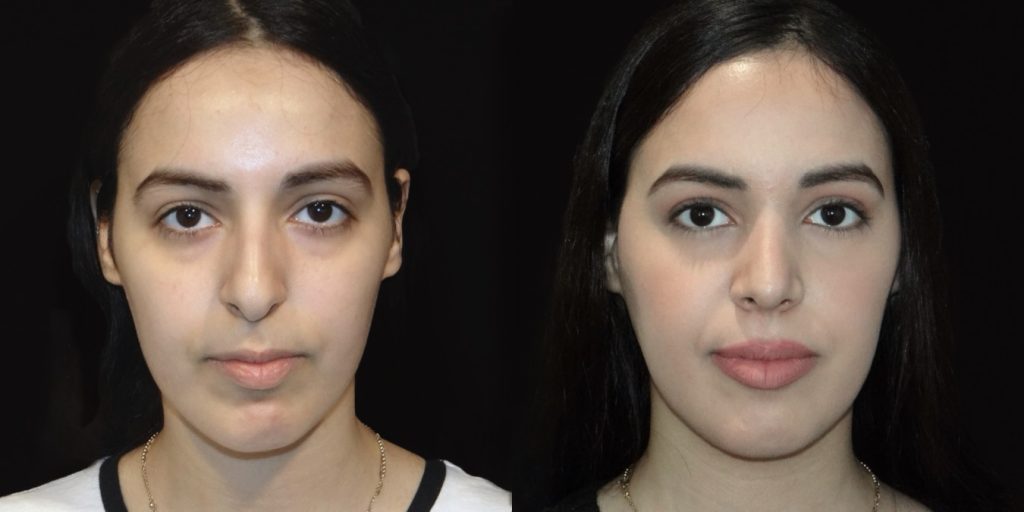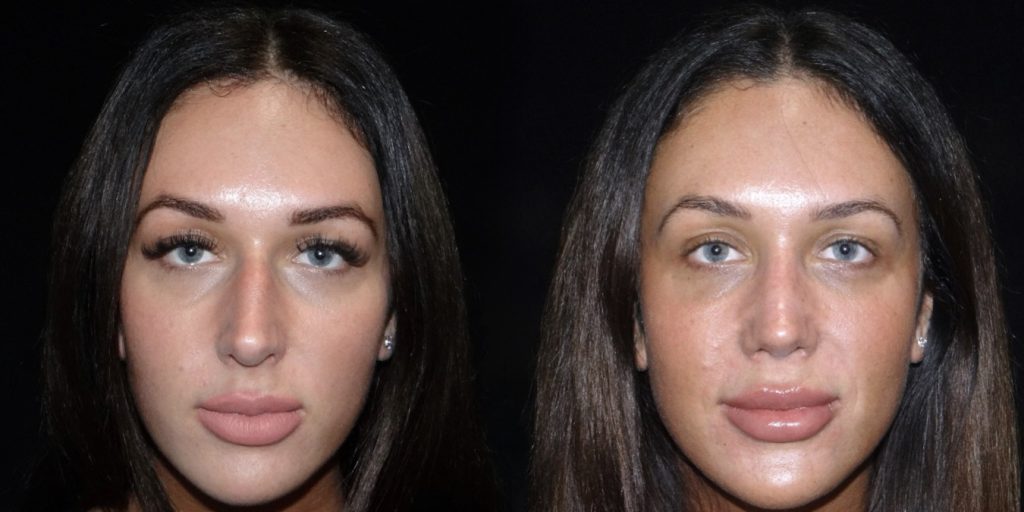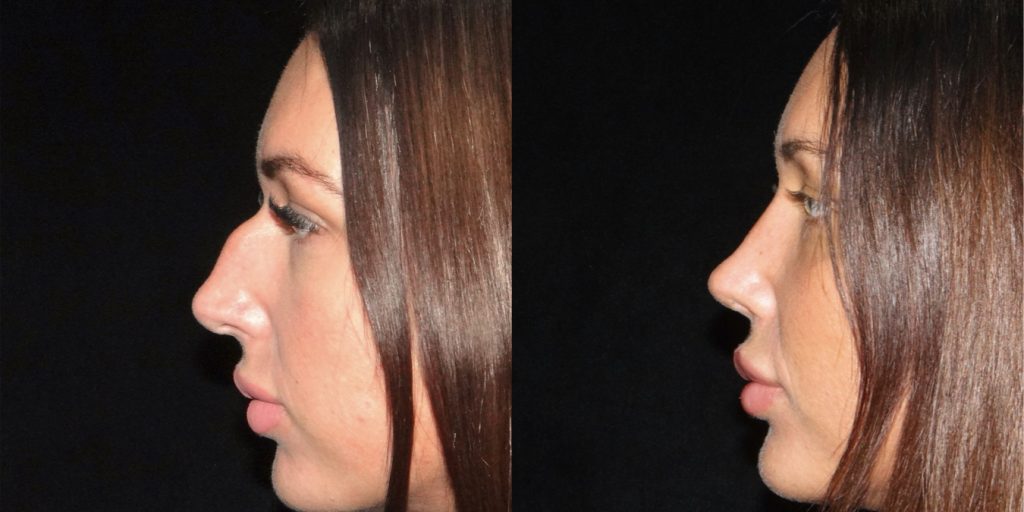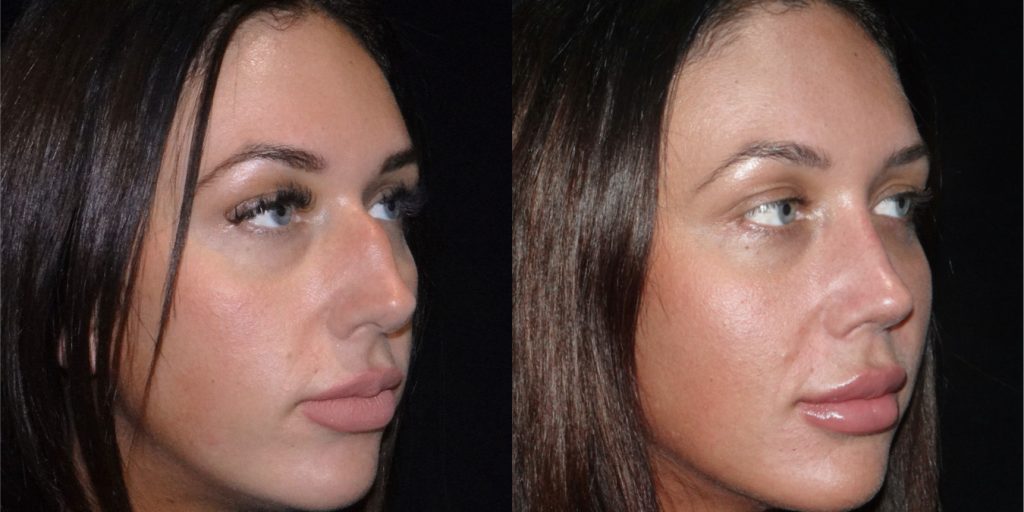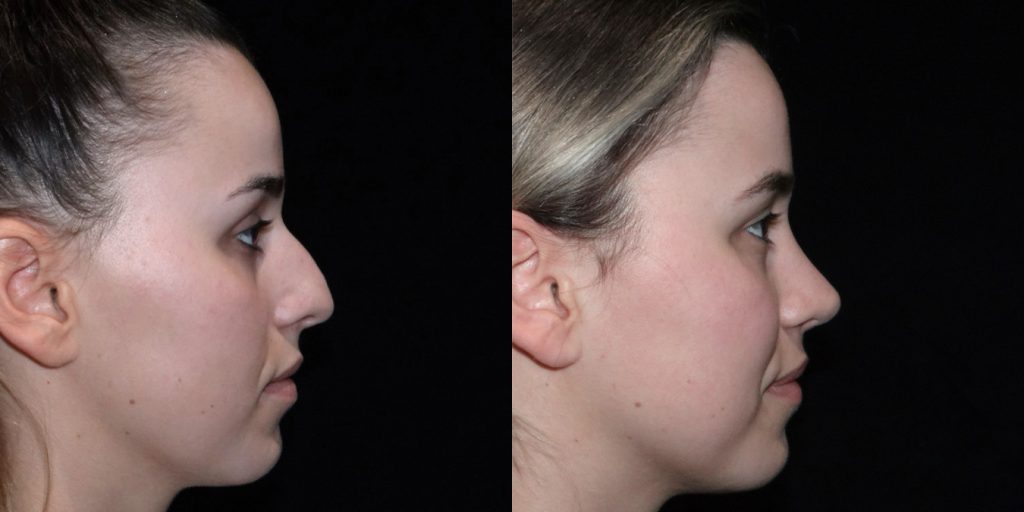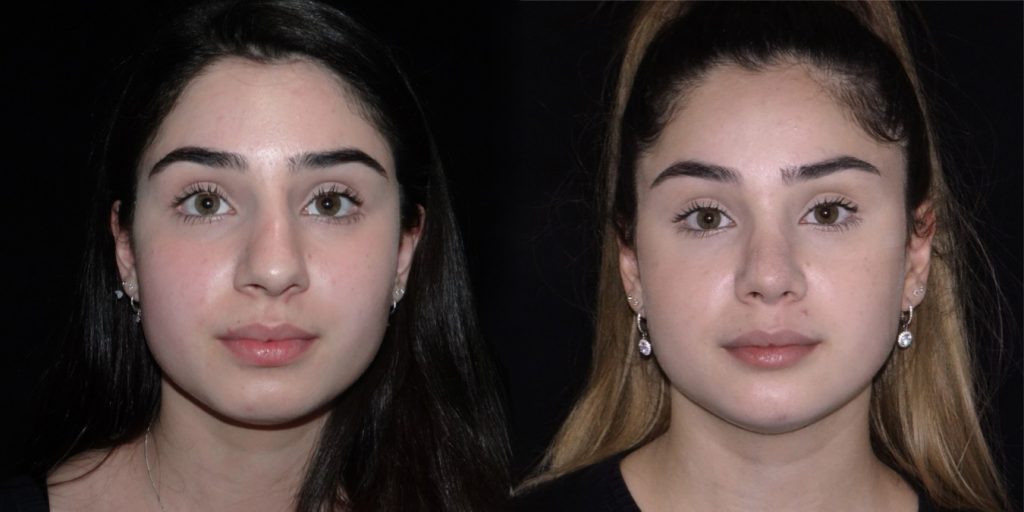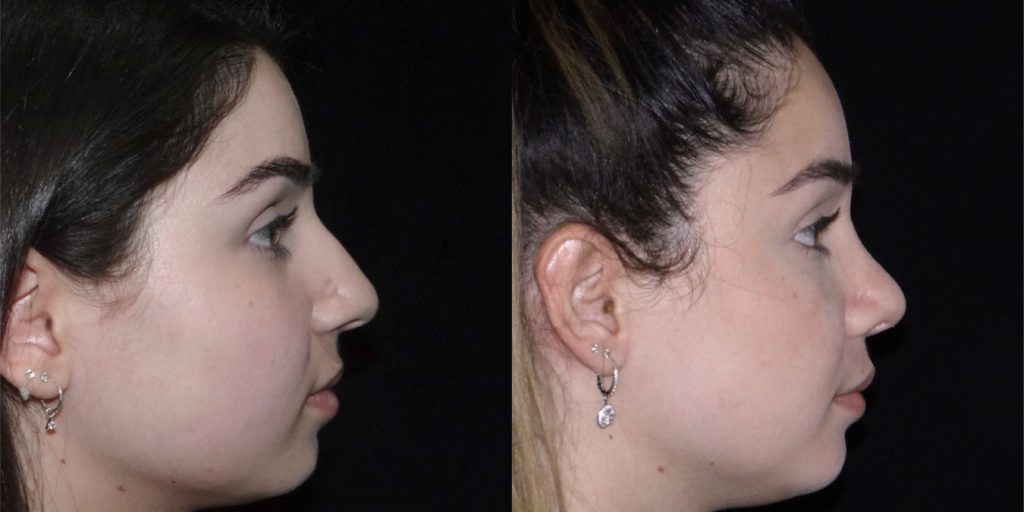Disclaimer: These images are provided for general educational purposes only and depict outcomes for individual adult patients. Surgical results vary depending on anatomy, healing, and other individual factors. Outcomes cannot be guaranteed. Images do not constitute medical advice. Any decision to undergo surgery should be based on a consultation with a suitably qualified medical practitioner.
Female Rhinoplasty Before and After
Photographic examples of rhinoplasty outcomes may assist in providing general education about the types of results that may occur following surgery. However, individual results can vary significantly due to differences in anatomy, skin thickness, healing capacity, and other factors.
Understanding the Role of Rhinoplasty
Rhinoplasty is a surgical procedure that may be undertaken to address medically assessed structural or functional concerns of the nose. These may include changes to nasal anatomy that affect breathing or adjustments to nasal features where clinically appropriate.
Individuals may be referred for rhinoplasty following trauma, congenital abnormalities, or persistent functional issues such as nasal obstruction. All patients considering rhinoplasty should undergo a thorough clinical consultation, including assessment of medical history, current nasal structure and function, and their treatment goals. Decisions to proceed with surgery should be informed by the risks, limitations, and expected outcomes of the procedure.
Read more about the risks of surgery.
Aspects That May Be Addressed in a Rhinoplasty Procedure
Following appropriate clinical evaluation, rhinoplasty surgery may involve adjustments to anatomical features of the nose such as:
• Nasal size or projection
• Irregularities of the nasal bridge or tip
• Deviated structures or dorsal humps
• Nostril width or symmetry
• Internal anatomical features contributing to airflow obstruction
Rhinoplasty Recovery Considerations
Recovery following rhinoplasty will vary from patient to patient. Common experiences in the first few days may include:
- Swelling and bruising around the nose and eyes
- Tenderness or discomfort
- Headaches or nasal congestion
Recovery experiences vary. Some individuals may resume certain daily activities within 7–10 days, though timelines depend on personal health, the extent of surgery, and individual healing response.
Consultation with Dr Shahidi, Otolaryngology, Head and Neck Surgery MED 0001167352, experienced in rhinoplasty surgery
If you are considering rhinoplasty for aesthetic or functional reasons, we recommend booking a consultation with Dr Shahidi. During your appointment, a comprehensive assessment will be conducted to determine your suitability and explore potential treatment options tailored to your individual needs.
To learn more:
A second opinion from an appropriately qualified health practitioner is recommended before proceeding with any surgical procedure.
Consultation with Dr Shahidi - Head and Neck Surgery Sydney
We invite you to book a consultation with Dr Shahidi to discuss your concerns and explore whether treatment may be appropriate for your needs. Please contact our team to arrange an appointment or ask any questions.
If you are in the early stages of considering rhinoplasty, you are welcome to review our educational materials, including frequently asked questions and general information about the procedure. With patient consent, de-identified images may also be available for illustrative and educational purposes. Individual outcomes vary.




